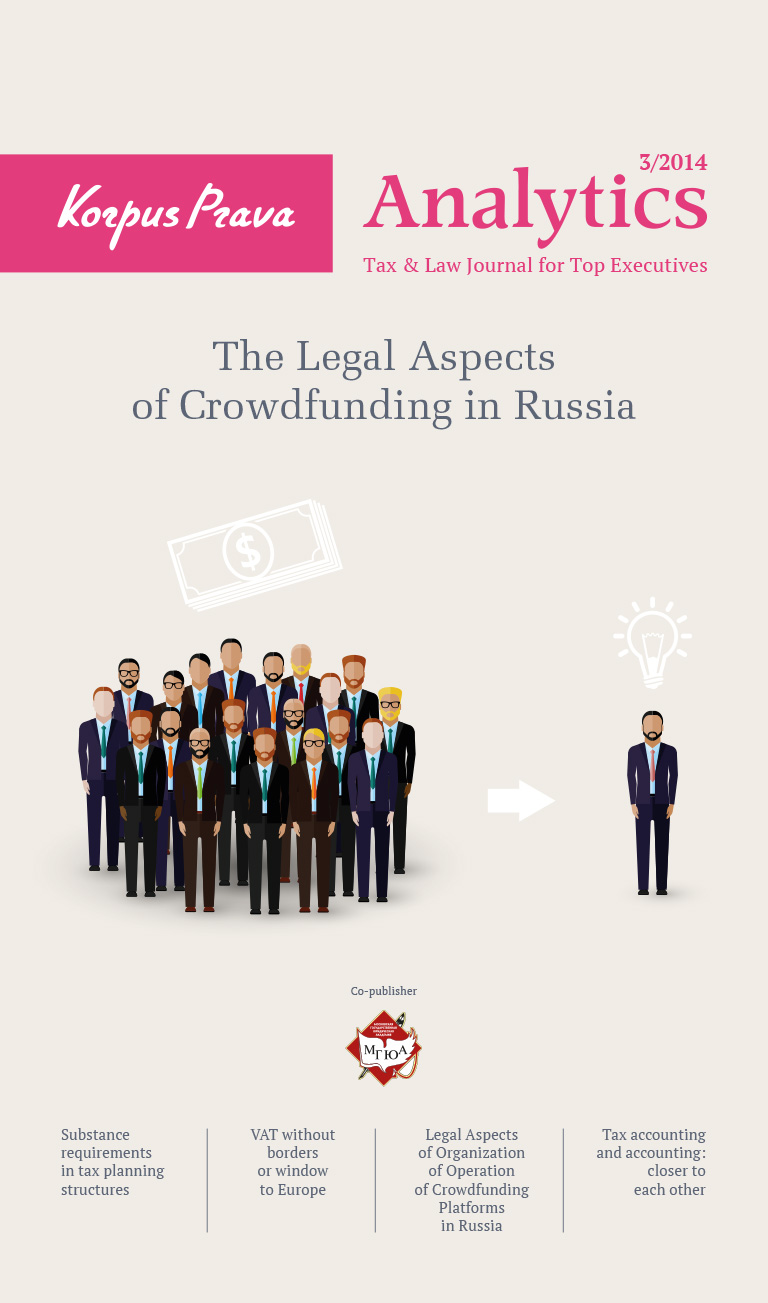- Cyprus Citizenship Scheme for Foreign Investors
- Squeezed But Pleased: Taxation of Passive Income in the European Union
- VAT Without Borders or Window to Europe
- Legal Aspects of Organization of Operation of Crowdfunding Platforms in Russia
- Substance Requirements in Tax Planning Structures
- “Deposit Splitting” of Individuals. Legal Civil and Criminal Aspects
AML 5, or Nice to Meet You
Rumors regarding the introduction of an electronic register of beneficiaries in European jurisdictions have been around for a long time and finally, they have become real. On May 30, 2018, the European Union issued Directive 2018/843 amending EU Directive 2015/849 dated 20.05.2015 (the so-called AML 4 Directive), as well as previous AML directives on countering the use of financial systems for the purposes of money laundering and terrorist financing. This document is abbreviated as the AML 5 Directive (Anti-Money Laundering Directive). Jurisdictions of the European Union that fall within its scope should bring local laws in compliance with this Directive by January 10, 2020.
The AML 4 Directive issued in 2015 also requires to keep a register of beneficiaries by various legal entities that provide financial services, but the register was individual for each client or company, was kept in internal files of the person that provided the service, and was only available for inspection at the request of regulatory authorities (such as the police, Securities and Exchange Commission, etc.). The register of beneficiaries provided for by the AML 5 Directive is absolutely different, since it is the unified electronic register, which may be accessed by a much larger number of persons.
First of all, let us remind ourselves who is considered to be a beneficial owner. The AML 4 Directive provides the definition of the beneficial owner. In accordance with section 3 (6) the beneficial owner is an individual who exercises real control over a company. In case there are several shareholders in the company, the beneficial owner is an individual who owns 25% of the shares plus one share of the company (or more). In case such person is not identified, the beneficial owner is an individual who actually manages the company (for example, the director general or managing director).
What will the electronic register of beneficiaries look like? Based on the provisions of the AML 5 Directive, a national register containing information about beneficiaries should be created, which will be publicly accessible subject to certain aspects. An unconditional access to the register of beneficiaries shall be granted to regulatory authorities (such as tax authorities, Securities and Exchange Commission, and other regulatory authorities that are responsible for preventing and combating money laundering and terrorist financing). Each of the member states of the European Union shall resolve at its own discretion on register accessibility for other entities. The AML 5 Directive specifies that in order to use the system it is possible to set a requirement for registration in the system and payment for its use. Information about beneficiaries shall be kept in the register of beneficiaries for at least 5 years, but no more than 10 years after the company ceases to exist. The Directive also provides for the exchange of data between the member states of the European Union via the European Central Platform established by European Union Directive (EU) 2017/1132.
It should be noted that the requirement to enter information about beneficiaries applies not only to companies, but also to trust structures and financial organizations for all accounts, except for brokerage ones, and safety deposit boxes. The register of beneficiaries for companies should be available for data entry from January 10, 2020; the register of beneficiaries for trust structures should be available for data entry from March 10, 2020; the register of beneficiaries for accounts should be available for data entry from September 10, 2020. The information exchange via the European Central Platform should be available from March 10, 2021.
When it comes to companies, the electronic register of beneficiaries will include such information as the name, date of birth, company, country of residence and citizenship, nationality and percentage of beneficial ownership. For trust structures, the electronic register of beneficiaries will include information about attorneys, trust founders, beneficiaries or other persons exercising control over the trust, and protectors, if any. Moreover, the electronic register of beneficiaries will include the following information about the accounts: name or unique identification number, IBAN number, date of opening and closing of the account; for safety deposit boxes – the name of the person renting a deposit box or individual identification number. It is assumed that regulatory authorities will be given access to all information, while other persons may be provided with limited information.
This article briefly covers the main provisions of the AML 5 Directive concerning the electronic register of beneficiaries, but the lack of practice in this area should be taken into account, so it is premature to talk confidently about how the electronic register of beneficiaries is going to work in any jurisdiction. It is obvious that the transparency inherent to jurisdictions with a common law system will almost cease to exist upon the introduction of the AML 5 Directive, particularly with the already existing automatic exchange of tax information (Common Reporting Standard / CRS).
Given the fact that European legislators are moving forward, and the European business community is waiting for the AML 6 Directive in the near future, it is always better to seek the advice of qualified specialists on the arrangement of business processes and the choice of jurisdiction for business.
Your subscription to our journal will definitely boost the efficiency of your specialists and downsize your expenses for consultants.
The journal is available free of charge in the electronic version.
Free Download

